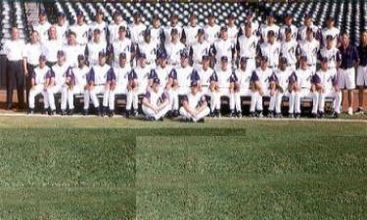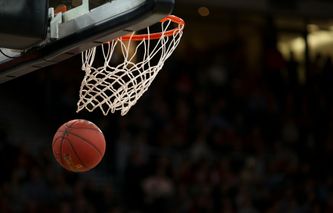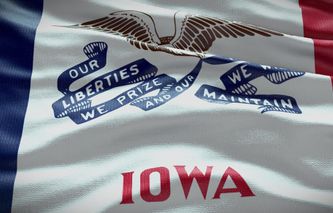23rd Season
First Game Played March 31, 1998
401 East Jefferson Street.Phoenix, AZ 85001
Tel. (602) 462-6500
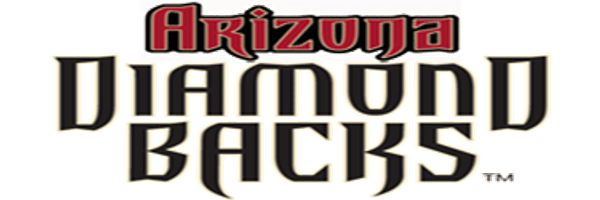
Historical Moments
1998:On March 31st with 50,179 fans overflowing Bank One Ballpark, the Arizona Diamondbacks play the first regular-season game in franchise history, against the Colorado Rockies. The Rockies would win the game 9-2, but not before Travis Lee collects Arizona’s first hit (a first-inning single), first homer, first-run, and first RBI. The Diamondbacks would get their first win on April 4th with a 3-2 victory over the San Francisco Giants. There was not much success for the first-year team their best play comes during a seven-game winning streak as August turned into September. The D-backs would go on to finish in last place with a typical 65-97 expansion record.
1999:To be more competitive, the Diamondbacks make several key acquisitions highlighted by the Free Agent signing of Randy Johnson, one of the most dominating pitchers in the history of baseball. Another critical addition was OF Luis Gonzalez, whose early 37-game hitting streak helps set the pace for the Diamondbacks to battle for the pennant race. The Diamondbacks were a team that refused to quit, and this was exemplified on three consecutive nights in May when the Diamondbacks won games against the Montreal Expos on walk-off homers. On May 10th, it was 2B Jay Bell, On May 11th, it was Luis Gonzales, and on May 12th it was 3B Matt Williams. By the middle of the season, it was clear the Diamondbacks were for real, with Randy Johnson well on his way to picking up the Cy Young Award. The Diamondbacks would challenge the Western Division title, but they would win it by a comfortable 14-game spread with an impressive 100-62 record, becoming the fastest expansion team to make the playoffs. The Diamondbacks would go on to face the New York Mets in the NLDS. In the team’s first postseason game, at the BOB, Arizona drops an 8-4 decision to the Mets, with Edgardo Alfonzo’s ninth-inning grand slam, his second homer of the day, making the difference. The next night the Diamondbacks will notch their first postseason win thanks to a four-hit effort by Todd Stottlemyre. The D-Backs would lose the series in four games when Todd Pratt playing in place of an injured Mike Piazza hit a series-ending walk-off homer in the tenth inning just out of reach of Gold Glover Centerfielder Steve Finley’s valiant try.
2000:In April, Randy Johnson pitches what might have been the best first month in baseball history, going 6-0 with a 0.91 ERA, including three complete games and a pair of shutouts. Johnson would go on to win his second straight Cy Young and record his 3,000th career strikeout. The Diamondbacks would also add more potency their pitching with the midseason acquisition of Curt Schilling for the Philadelphia Phillies. However, Schilling would only pitch mediocre baseball in the final two months of the season as the injury-depleted line up struggled all season. The D-Backs would go on to finish in third place with an 85-77 record. Seeing it as a disappointment, the team fires manager Buck Showalter and replaces him with broadcaster Bob Brenley.
2001:With Curt Schilling in camp for a full-season and healthy, he gave the Diamondbacks one of the most potent 1-2 pitching combinations in baseball history. Along with Randy Johnson, the two ace pitchers dominate the National League all season, finishing 1-2 in almost every major pitching category. While Schilling fell just seven K’s short of 300 strikeouts, the Big Unit would come within 11 of the single-season record with 372. The two would finish 1-2 n the Cy Young voting with Johnson getting the nod to earn his third straight Cy Young. While Johnson and Schilling were dominating NL hitters, Luis Gonzalez was having a career year smacking 57 homers and driving in 142 runs; both were good enough for 3rd in the NL. Also helping to improve the offense was newly acquired Mark Grace, whose steady 1B and hitting helped get the D-Backs into playoff contention. The Diamondbacks pull out in front in August, and over the final 6-weeks of the season, the San Francisco Giants held the Division Title by two games with a 92-70 record. In the NLDS, the Diamondbacks would face the St. Louis Cardinals. The Diamondbacks would get off to a good start as Curt Schilling pitched a complete game three-hit shutout to earn the D-backs a 1-0 victory in Game 1. Randy Johnson would struggle in Game 2, and the series shifted to St. Louis tied at one apiece. Trailing 2-1 in Game 3, Craig Counsell, who only hit four homers in the regular season smack a three-run home run in the seventh inning to give the Diamondbacks a 5-3 win. However, the Cards would bounce back again and send the series back to Arizona for a decisive fifth game. Once aging, Schilling dominated the Cardinals allowing just one run in nine innings, but the Snakes needed a two-out RBI single in the ninth from Tony Womack to bring home the series-winning run. In the NLCS, the Diamondbacks would face the Atlanta Braves. With Johnson and Schilling winning three games, the D-backs would take the series in five games. Light hitting Craig Counsell who’s four RBI in Game 4 proved to be the back-breaker, was named LCS MVP.
2001 World Series:In the World Series, the four-year-old Arizona Diamondbacks would take on the 26-time World Champion New York Yankees. In the Diamondbacks previous three seasons, the Yankees had been crowned World Champions at the end of each season. The odds appeared against the upstart team from the desert, but their 1-2 pitching punch of Randy Johnson and Curt Schilling would prove to be an equalizer. Schilling and Johnson would shut down the Yankees in the first two games at the BOB and go to New York up 2-0 in the series. After the Yanks edged them 2-1 in Game 3, the D-backs put the ball in the hands of Schilling for Game 4. Schilling would shut down the Yanks, and with the score 3-1 in the ninth inning, the D-backs appeared to have a stranglehold on the series. However, Snakes closer Byung-Hyun Kim would yield a two-out game-tying Home Run and would give up another two-out blast in the ninth to allow the Yankees to tie the series at two games apiece. In Game 5, Miguel Batista would shut down the Yankees all game long and gave the D-backs a 2-0 lead heading to the 9th. However, Kim would melt down again, allowing another game-tying homer, as the Yankees rallied to take the game in extra-inning and take a 3-2 series lead. After losing two straight heartbreakers to the Yankees, the Diamondbacks returned to the desert trailing 3-games-to-2. A lesser team would already be mentally out of the series, but with Johnson and Schilling on the mound, the D-backs knew they had a fighting chance. Due to the September 11th terrorist attacks, the series would enter November for the first time, and it was already shaping up as one of the best Fall Classic of all-time. In Game 6, the D-backs would slaughter the Yankees 15-2, which allowed Randy Johnson to converse some of his energy just in case he was needed for the decisive Game 7. The seventh game would feature a matchup of Curt Schilling and Roger Clemens. The two aces pitchers would duel scoreless until the sixth inning when the D-backs gained a 1-0 advantage. However, the Yankees would rally and take a 2-1 lead on the 8th inning off a tiring Curt Shilling. Already leading 2-1, the Yankees had a runner on second, and two outs Randy Johnson was brought in to keep Arizona in the game. Johnson would freeze the runner at second and retire the Yanks in order in the ninth inning to give the D-backs a fighting chance down 2-1. However, with Mariano Rivera baseball’s most dominant closer on the mound, a comeback still looked like a long shot. Mark Grace would lead off the ninth with a sharp single up the middle; Pinch Runner David DeLucci would replace him at first. Damian Miller up to bunt hits the ball too hard, but Rivera throw was in the dirt, and Arizona had runners on 1st and 2nd with nobody out. After Jay Bell failed bunt forces DeLucci, at third Tony Womack comes up with his second big hit of the season smacking a double down the rightfield line to tie the game and put the winning run on third. After Craig Counsell is hit by a pitch, the bases were loaded for Luis Gonzalez with one out. Gonzo, who came throughout the season, came through again with a bloop single to center to send Jay Bell home with the series-winning run, giving the four-year-old Diamondbacks their first World Series Championship. Randy Johnson became the first pitcher to win three World Series games in 33 years, and Curt Schilling shared World Series MVP honors.
2002:Coming off their World Championship, the dynamic duo of Randy Johnson and Curt Schilling were unhittable again finishing 1-2 in Cy Young race, with Johnson emerging with his record-tying fourth straight Cy Young. The D-backs would win the NL West for the third time in four years by posting a solid 98-64 record. As the season wound down, the Diamondbacks postseason heroes from the year before Craig Counsell and Luis Gonzales were lost to injury. Playing without their leading offensive player in Gonzales, the Diamondbacks were swept in three straight games by the St. Louis Cardinals in the NLDS.
2003:The Diamondbacks would find themselves behind the eightball early as their dynamic duo of Randy Johnson and Curt Schilling struggled before going on the disabled list. Despite neither ace posting winning record or winning ten games, the D-Backs would stay in the race for the wild car until September, as rookie Brandon Webb helped fill the void left by Schilling and Johnson’s struggles with a solid 2.84 ERA. However, Webb himself would struggle in the final month as the Diamondbacks faded, finishing in third place with a record of 84-78. Following the season, the Diamondbacks would trade Curt Schilling to the Boston Red Sox in a cost-cutting move.
2004:To bolster their offense, the Diamondbacks acquired Richie Sexson from the Milwaukee Brewers for Lyle Overbay, Junior Spivey, Craig Counsell, and Chad Moeller. Sexson would get off to a good start with nine home runs in April. However, as the first month came to a close, Sexson would suffer a shoulder injury. After missing three weeks, Sexson would attempt to come back only to injury it worse which would lead to season-ending surgery, limiting him to just 23 games. Sexson would not be the only injury the Diamondbacks would suffer as Luis Gonzalez would later be lost to an elbow injury, as the Diamondbacks roster began to take on a Triple-A feel. Except, when Randy Johnson pitched as a year after an injury felled him he was the Unit of old surpassing 4000 career strikeouts early in the season, and pitching a Perfect Game against the Atlanta Braves on May 18th. When Johnson threw his perfect game, the D-Backs struggled with a 15-23 record and no idea just how bad things were about to get. After a win the following day, the Diamondbacks would win just 2-of-their-next-12-games. Things would only get worse in June as they endured an 11-game losing streak, which would cost manager Bob Brenley his job. Under replacement, Al Pedrique things would only get worse as the D-Backs lost 19-of-their-first-21, including 14 straight completing a dreadful 5-23 July. The Diamondbacks would go on to finish in last place with a miserable 51-111 record. Despite the horrible record, Randy Johnson managed a solid season with a 16-14 record and 2.60 ERA with a league-high 290 strikeouts. As the disastrous season wound down, the Diamondbacks began to make drastic changes as CEO Jerry Colangelo was replaced by former Super Agent Jeffrey Moorad.
2005:After losing 111 games there was no place else to go but up as the Diamondbacks who underwent an ownership change also changed the team on the field as they allowed Richie Sexson to sign with the Seattle Mariners while reacquiring Craig Counsell and signing slugger Troy Glaus. To reshape the pitching staff, the Diamondbacks would sign Shawn Estes and Russ Ortiz while trading Randy Johnson to the New York Yankees for Javier Vazquez, and minor league prospect Dioner Navarro who they later traded to the Los Angeles Dodgers for Shawn Green. The offseason was not without embarrassment as the search for a new manager ended up blowing up in General Manager Joe Garagiola Jr.’s face. Wally Backman was hired and fired within a few days after a background check revealed legal and financial troubles in Backman’s face that the organization found too embarrassing. Eventually, the Diamondbacks would settle on Bob Melvin recently fired by the Seattle Mariners as their new skipper. Under Melvin, the new Diamondbacks would play solid winning baseball in April as the return of Luis Gonzalez also bolstered them. He would hit 24 homers with 79 RBI as the Diamondbacks used the home run ball to their advantage. Newcomers Glaus and Tony Clark each slugged more than 30, while Shawn Green and Chad Tracy were each over 20, as the D-Backs were 30-22 at the end of May. However, a June swoon would strike at an inopportune time as the Diamondbacks won just 9-of-28-games. Despite playing sub .500 ball, the Diamondbacks were in the race as the entire NL Western Division struggled with all five teams below .500 for most of the final two months. August saw the Diamondbacks struggle again as their pitching was often exposed as their weak underbelly. On September 20th, the Diamondbacks sat in third place with a 67-83 record as all hope for a division title was all but lost. The D-Backs would not give up as they hung in as long as possible, sweeping the Los Angeles Dodgers twice and taking two of three against the eventually Division Champion San Diego Padres. They finished strong winning 10-of-their-last-12-games to get second place with a 77-85 record that marked a 26-game improvement.
2006:As some of the Diamondbacks top prospects like Connor Jackson began to establish themselves as the foundation of the future, players like Troy Glaus were dealt away to the Toronto Blue Jays for Orlando Hudson, as the D-Backs got younger and more talented. One player having a break out year was Brandon Webb, who posted a 16-8 record and a 3.10 ERA to earn Cy Young honors in the National League. The season was not smooth sailing as after Webb; the Diamondbacks struggle to find any consistent pitching. Orlando Hernandez, who was acquired in the off-season for Javier Vasquez struggled, before being traded to the New York Mets in May. Ironically the D-Backs would later acquire El Duque’s brother Livan Hernandez from the Washington Nationals; Livan would pitch well down the stretch posting an ERA of 3.76 with a record of 4-5 in ten games. Meanwhile the Diamondbacks had to deal with a steroids scandal when reliever Jason Grimsley was busted for receiving Human Growth Hormone in an FBI sting. Grimsley would retire from baseball, as accusations of players named in an FBI interview hung like a dark cloud over the D-Backs during June, as the Diamondbacks who were in first place lost 20-of-23-games in June. The Diamondbacks would never fully recover as they ended up stumbling their way to a 76-86 record tied at the bottom of the National League Western Division.
2007:With Brandon Webb anchoring a reliable pitching staff that featured the return of Randy Johnson, who was reacquired from the New York Yankees. The Diamondbacks entered the season with a new look featuring a red and black color scheme, and renewed hope. Early on, the D-Backs played well starting the season with wins in seven of their first nine games. However, inconsistency marked the next month, as two five-game losing streaks sandwiching a six-game winning streak had their fortunes going up and down. Johnson, who won four Cy Youngs, would not see much action as a sore back limited him to just ten games, in which he posted a 4-3 record. Meanwhile, the young stars came into their own, as the team became affectionately known as the “Baby Backs” rose to the top of the National League West powered by an eight-game winning streak. One young pitcher who grew to be one of the Diamondbacks’ most reliable starters was Micah Owings. He often delivered the winning hit in his starts, becoming the first pitcher since the Designated Hitter era to have two four-hit games in the same season. The Diamondbacks being so young still had fits of losing as they struggled heading into the All-Star Break, but an eight-game winning streak at the end of July helped lift the Diamondbacks again they were in first or close to first place most of the season. The Diamondbacks would win the division with a 90-72 record that was the best mark in the mediocre National League. In the NLDS against the Chicago Cubs, the Diamondbacks were a slight underdog as the Cubs entered the playoffs as the sentimental favorite. However, the young D-Backs were not much for sentimentally as Brandon Webb pitched a solid game giving the D-Backs a 3-1 win in the opener. In Game 2, it was the young Backs offense that led the way, as Chris Young erased an early 2-0 Cubs lead with a three-run home run in the second inning, as the Diamondbacks took a 2-0 series lead with an 8-4 win. Young would strike again as the series shifted to Wrigley Field, hitting a leadoff homer as the D-Backs completed the sweep with a 5-1 win behind Livan Hernandez. In the NLCS against the streaking Colorado Rockies, the Diamondbacks found themselves in an early hole as Jeff Francis outdueled Brandon Webb to give the Rockies a 5-1 win in Game 1. Needing a win in Game 2 the D-Backs battled the Rockies into extra innings, however, closer Jose Valverde who saved 47 games during the regular season lost control of the strike zone as he walked three straight hitters in the 11th inning to force home the winning run as the Rockies took a 2-0 series lead with a 3-2 win. As the series shifted to Colorado, the Diamondbacks could not get back on track as the Rockies continued to steamroll through the National League, completing a four-game sweep by silencing the Diamondbacks bats.
2008:Coming off a Western Division Championship, the Diamondbacks got off to a fast start, holding a 20-8 record at the end of April, which was the best in baseball as they built a six and half-game lead. A big reason for the D-Backs’ strong start was Brandon Webb, who won his first nine starts. In the middle of May, the Diamondbacks offense began to resemble the desert with runs being far too scarce. Once a dozen games above .500, the D-Backs went into the All-Star Break with a 47-48 record. Despite their losing record, the Diamondbacks remained in first place throughout the first half. In the second half, the Diamondbacks would get a challenger for their first-place perch, as the Los Angeles Dodgers acquired Manny Ramirez in a three-team deal with the Boston Red Sox and Pittsburgh Pirates on July 31st. Forced to respond, the D-Backs dealt pitcher Micah Owings, and Minor League catcher Wilkin Castillo to the Cincinnati Reds on August 11th, for Adam Dunn, who at the time led the National League with 32 Home Runs. At the same time, the already struggling offense was dealt another blow, when 2B Orlando Hudson needed season-ending wrist surgery. With Webb in the running for another Cy Young, while compiling a 22-7 record, the D-Backs remained in first place entering September. However, the lead was shrinking as the Dodgers took two of three in Arizona, beating Brandon Webb in the rubber game of the series. On September 5th, the Diamondbacks faced the Dodgers again in Los Angeles hold a game and half lead. However, the series got off on the wrong foot, as Dan Haren was hammered, with the Derek Lowe pitching a two-hit shut out to lead the Dodgers to a 7-0 win. A day later, with Webb on the mound, Manny Ramirez knocked the Diamondbacks out of first place, blasting a three-run homer to give the Dodgers a 7-2 win. The Dodgers would complete the sweep with a 5-3 win. The Diamondbacks would never recover as they suffered a three-game sweep at the hands of the San Francisco Giants, as they went on to finish the season in second place with an 82-80 record while falling two games short of first place.
2009:Despite the departure of Adam Dunn, Orlando Hudson, and Randy Johnson through free agency, the Diamondbacks entered the season with expectations of challenging for the National League West again. However, they would get off to a rocky start as ace Brandon Webb was lost for the season to a shoulder injury suffered in his first start on April 7th. One month into the season, the D-Backs scuffled with a 12-17 record, leading to the dismissal of manager Bob Melvin, who was replaced by A.J. Hinch on May 8th. Under Hinch, the Diamondbacks would not fair much better as they continued to struggle to post a wretched 9-17 mark during June. The Diamondbacks would play winning baseball in July and August, but there was nothing left that could salvage their season as they ended the season in last place with a disappointing record of 70-92. Among the lone bright spots was Mark Reynolds, who had a stellar season with 44 home runs and 102 RBI. Meanwhile, on the mound, without ace Brandon Webb, the only D-Back starting pitcher to post a winning record was Dan Haren, who finished the season with a mark of 14-10 with an ERA of 3.14.
2010:As it turns out, Brandon Webb would not pitch for the Diamondbacks again, as he would miss the entire season with the lingering effects of the shoulder injury. Following the season, the 2006 Cy Young winner would not be re-signed. After a mediocre April, in which the Diamondbacks posted an 11-12 record, the bottom fell out in May, as they struggled to post a 9-20 record, sliding into last place where they would remain the rest of the season. After posting an 11-16 record in June, the Diamondbacks would fire manager A.J. Hinch and replace him with bench coach Kirk Gibson. At the same time, General Manager Josh Byrnes was replaced by Jerry Dipoto on July 1st. During this period, the lone highlight was a June 25th No-Hitter by Edwin Jackson against the Tampa Bay Rays. A month later, Jackson would be traded to the Chicago White Sox for prospects Daniel Hudson and David Holmberg. July would be another ugly month for the D-Backs as they posted a 7-18 record. In August, the Diamondbacks would show some signs of improvement as they had their only winning month of the season at 16-13. The Diamondbacks would go on to finish with a terrible record of 65-97, landing in last place for the second straight year. Following the season, Gibson would remain the manager, while Kevin Towers was hired as the club’s new General Manager.
2011:After two straight last-place seasons, the Diamondbacks did not enter the year with high expectations. With a solid young pitching staff, Manager Kirk Gibson knew from the start that they could be better than anyone expected. The Diamondbacks would start the season with an extra-inning win on the road against the Colorado Rockies. They would only win one of their next four games before facing the Cincinnati Reds in their home opener. With Ian Kennedy on the mound, the Snakes bats came alive as they thumped the Reds 13-2. However, wins would not be plentiful in April, as they finished the month an 11-15 record. The D-Backs would continue to struggle, as they held a 15-22 record on May 13th. Suddenly the Diamondbacks began to turn things around thanks to solid starting pitching led by Ian Kennedy, who had a breakout season, posting a 21-4 record with an ERA of 2.88. By winning 15-of-17 games, the Diamondbacks would end May in first place with a record of 30-25. Although they were not able to hold their first-place standing long, the Diamondbacks were within striking distance of the reigning World Champion San Francisco Giants. They hosted their first-ever All-Star Game, with Miguel Montero and Justin Upton representing the hometown team. Coming out of the break, the Diamondbacks again got solid pitching and made a move on the Giants, ending the month of July with a solid 59-49 record heading into a three-game series with the Giants in San Francisco. With Ian Kennedy and Daniel Hudson getting solid performances, the D-Backs would sweep the series and gain a tie for first place, heading into the series finale. Although the Giants won the game, the Diamondbacks had served notice they were not going away. Playing the Houston Astros and New York Mets at home, the Diamondbacks took advantage of the easy part of their schedule to seize first place in the National League West. This time their stay would not be short, as the Giants struggled as the Diamondbacks ended August with a six-game lead, and a record of 78-59. As August came to an end, the D-Backs made a waiver trade with the Toronto Blue Jays, exchanging second basemen Kelly Johnson for Aaron Hill. Like August, the Diamondbacks had a big series in San Francisco to begin September. The Giants would take the opener, but with Kennedy and Hudson again pitching the Diamondbacks won two of three. The Diamondbacks would win the division with a record of 94-68, as Kirk Gibson was named National League Manager of the Year. Helping the Diamondbacks cause was an outstanding 45-25 record after the All-Star Break.
2011 NLDS:With Ian Kennedy on the mound, the Diamondbacks suffered a 4-1 loss in their postseason opener against the Milwaukee Brewers, losing 4-1 at Miller Park, where the Brewers had the best home record in baseball. The Brewers would also bash Daniel Hudson, winning 9-4 to take a 2-0 series lead. Needing a big start as the series shifted to Chase Field, the Diamondbacks got one from Josh Collmenter. He allowed just one run on two hits in seven innings of work as the Diamondbacks took Game 3 by a score of 8-1, as Paul Goldschmidt provided the big hit with a Grand Slam in the fifth inning to break the game open. In Game 4, it was Ryan Roberts who had the big lumber hitting a first-inning Grand Slam, as Chris Young hit two homers to lead the D-Backs to a 10-6 win to even the series. Back in Milwaukee for the decisive Game 5, the Diamondbacks got a solid start from Ian Kennedy but again trailed 2-1 as they came to bat in the ninth innings. Against closer John Axford, the D-Backs would scratch out a run, as Gerardo Parra, who led off with a double scored on Willie Bloomquist’s bunt single. However, winning the series was not meant to be for the Diamondbacks as the Brewers won the game in ten innings 3-2, with the home team winning all five games of the series.
2012:After their surprise division title, the Diamondbacks looked to get even better by strengthening their pitching staff as they acquired Trevor Cahill and Craig Breslow from the Oakland Athletics for Ryan Cook, Jarrod Parker, and Collin Cowgill. While they signed free agent Jason Kubel to add power to the lineup. The Diamondbacks would start the season strong, as they swept the San Francisco Giants at Chase Field as Arizona won seven of their first ten games. A five-game losing streak would end their early season momentum as they ended April at 12-11. The D-Backs would go through another five-game losing streak in May, as they found themselves in an early hole in the race for a second straight National League West title. Among the players who struggled in May was Ian Kennedy, who lost five consecutive decisions, while Trevor Cahill started the season at 2-5, as the Diamondbacks ended the month with a record of 23-28. The Diamondbacks would rebound in June as Cahill won four of five starts, while Aaron Hill became the first player to have two cycles in the same season since Babe Herman in 1931. Hill’s cycles came within two weeks of each other as the first came on June 18th in a 7-1 win at Chase Field against the Seattle Mariners, while the next one went on the road in a 9-3 win over the Milwaukee Brewers on June 29th. A six-game losing streak at the start of July took away all the momentum. The Diamondbacks would get back on track with five straight wins a few weeks later. This up and downplay would symbolize the Diamondbacks season as they were on the fringe of the playoff race all season, in the end, they would finish in third place right at .500 with a record of 81-81. A year earlier, Kennedy won 21 games and could not repeat the effort finishing at 15-12, while Trevor Cahill finished at 13-12. Jason Kubel proved to be worth the deal he received as he led the D-Backs with 30 home runs and 90 RBI, while Paul Goldschmidt and Aaron Hill each had more than 20 homers and 80 RBI.
2013:After finishing .500, the Diamondbacks hoped to regain the top spot in the National League West. Early on, things looked good for the D-Backs, as they won five of their first six games against the St. Louis Cardinals and Milwaukee Brewers as led the division through much of the first half of the season. While Ian Kennedy, the opening day winner, was suffering through a disappointing season, Patrick Corbin was having a breakout season, posting an 11-1 record with an ERA of 2.35 in the first half of the year. This came despite an inconsistent bullpen in which Heath Bell, Brad Ziegler, and Matt Reynolds all struggled with the closer’s role. The Diamondbacks also had a solid lineup with Martin Prado acquired from the Atlanta Braves with Randall Delgado, Nick Ahmed, Zeke Spruill, and Brandon Drury for Justin Upton and Chris Johnson had a strong first year in the desert; batting .282 with 14 home runs and 82 RBI. The D-Backs’ most dangerous hitter was Paul Goldschmidt, who won the Hank Aaron Award and finished second in MVP voting with a league-best 36 home runs and 125 RBI. As summer began, the Diamondbacks appeared to be in good shape, leading the West by three games with a record of 41-33. However, as June ended and July began, the Diamondbacks bullpen struggles began to take its toll as did the efforts of Kennedy and Trevor Cahill. Even games the Diamondbacks won were agonizing as a July 4th marathon on the road against the New York Mets saw the bullpen twice blow leads in extra innings, before winning in 15 innings 5-4. Despite the struggles, the Diamondbacks remained in first place until July 22nd when they were passed by the Los Angeles Dodgers like a freight train. Just a month earlier, the Diamondbacks led the Dodgers by nine and a half games, but the Dodgers had a historic 50 game run of 42-8 as the Diamondbacks threaded water. Looking to shake things up, the Diamondbacks traded Ian Kennedy, who had a record of 3-8 at the trade deadline Joe Thatcher, Matt Stites, and a compensatory draft pick from the San Diego Padres in return. At the same time, the Diamondbacks recalled Trevor Cahill from the minors. Cahill, who had a record of 3-10 in the first half of the season, was much better after the call-up, winning five his last decisions and ending the year with a 3.99 ERA. Unable to keep up the pace of the first three months, Patrick Corbin emerged as the Diamondbacks new ace, posting a solid record of 14-8 with 3.41 ERA and team-best 178 strikeouts. As the Dodgers pulled away to win the Western Division, the Diamondbacks were unable to keep up the pace and stay in playoff contention. They needed a win on the final day of the season just to secure a break-even record of 81-81 for the second straight year.
2014:Coming off a pair of .500 seasons, the Arizona Diamondbacks started the season in the land down under, hosting the Los Angeles Dodgers in pair of games in Sydney Australia. The games were the first major league games in Australia. Before the season started, the Diamondbacks suffered a big blow, as Patrick Corbin suffered a torn Ulnar Collateral Ligament in his elbow and needed season-ending Tommy John surgery. After losing both games in Australia, the Diamondbacks returned home and saw their bullpen implode in a 9-8 loss to the San Francisco Giants in the Chase Field opener. The Diamondbacks trip to Oz seemed to have them in a fog at the start of the season as they lost 18 of their first 23 games. During April, the Diamondbacks pitching staff was especially bad. Trevor Cahill and Brandon McCarthy both suffered through horrendous seasons with the Diamondbacks. Cahill posted a record of 3-12, with a 5.61 ERA spending a month in the minors, while McCarthy had a record of 3-10 with an ERA of 5.01 before being traded to the New York Yankees on July 6th for Vidal Nuno. By the time McCarthy was dealt, the Diamondbacks season was all but over as they held a record of 37-53. While the D-Backs had one of the worst pitching staffs in baseball, their lineup struggled with injuries as Paul Goldschmidt missed the final two months with a broken hand. At the time of his injury, Goldschmidt was on his way to an excellent season starting the All-Star Game while leading Arizona with 19 homers and 69 RBI. Only Miguel Montero would drive in more runs, 72, playing a full season as the Diamondbacks catcher. As the season came to an end, change was in the air in the desert as Tony LaRussa became the new CEO. LaRussa would fire General Manager Kevin Towers and replace him with Dave Stewart. Manager Kirk Gibson would be the next to go, being fired on the final weekend of the season. With Alan Trammel managing the last three games, the Diamondbacks would end the season with the worst record in all of baseball at 64-98.
2015:After finishing in last place, the Arizona Diamondbacks under new Manager Chip Hale decided to take a steady approach and turn things around with youth. Players like Yasmany Tomas, Ender Inciarte, Chris Owings, and Jake Lamb all 25 and under all got 350 or more at-bats. Another rookie who had an impact as David Peralta, who after nine years battling injuries in the minors, had a breakout season with 17 home runs, 78 RBI, and an average of .312. Yasmany Tomas, a star on the Cuban National Team before defecting to play MLB in 2014, had a solid season batting .273 with nine home runs and 48 RBI after signing a six-year deal worth $68.5 million. Ender Inciarte, meanwhile, emerged as a reliable hitter at the top of the lineup, batting .303, while scoring 73 runs and stealing 21 bases. Rubby De La Rosa emerged as one of the D-Backs’ most reliable pitchers after being picked up from the Boston Red Sox in the Wade Miley trade. De La Rosa won a team-best 14 games. As with most young teams, the Diamondbacks had their ups and down posting a record 37-40 over the first three months. Arizona would get a boost on the 4th of July, as Patrick Corbin returned after missing a year after Tommy John surgery. Corbin would earn the win as the Diamondbacks defeated the Colorado Rockies at Chase Field 7-3 in his first game back on the mound. Corbin would post a record of 6-5 with an ERA of 3.60 in 16 starts. Overall there were a lot of positives for the Diamondbacks as they finished in third place with a record of 79-83.
2016:The Arizona Diamondbacks rolled the dice in the off-season and made three big player moves. The biggest was the signing of free-agent pitcher Zack Greinke who signed a six-year, $206.5 million contract after finishing second in the Cy Young voting. In addition, the D-Backs acquired Shelby Miller from the Atlanta Braves for Dansby Swanson, Ender Inciarte, and Aaron Blair. Jean Segura was picked up from the Milwaukee Brewers for Aaron Hill, Chase Anderson, and Isan Diaz. Greinke got hit hard in his Arizona debut, as the Colorado Rockies pounded the Diamondbacks 10-5 on opening day at Chase Field. It would be a sign of things to come as they would get off to a 3-7 start. The Diamondbacks spent all of April trying to catch up from the slow start as they entered May holding a record of 12-14. Things were even worse in May as they went 11-17. Making matters worse, Shelby Miller landed on the disabled list in May after struggling through the first six weeks of the season. Miller returned in June, but continued to struggle and was eventually demoted to AAA after holding a record of 2-9 with a hefty ERA of 7.14. Shelby Miller would finish the season with a record of 3-12 and a 6.15 ERA. Miller was not the only Diamondback pitcher who had a terrible season as Patrick Corbin went 5-13 with a 5.15 ERA, while Robbie Ray went 8-15 with a 4.90 ERA. Meanwhile, Zack Greinke had his ups and downs, finishing 13-7 with a 4.37 ERA as the Diamondbacks finished in fourth place with a disappointing record of 69-93. Things were different for the Diamondbacks hitters as they got strong seasons from Paul Goldschmidt, Yasmany Tomas, and Jake Lamb. The results though, led to a housecleaning as both General Manager Dave Stewart and manager Chip Hale were fired at the end of the season.
2017:Coming off a 93-loss season, the Arizona Diamondbacks made wholesale changes. Mike Hazen replaced Dave Stewart as General Manager, hiring Torey Lovullo to replace Chip Hale as the team???? manager in the dugout. The new-look Diamondbacks got off to a strong start under Luvollo, winning five of their first six games as they posted a winning April at 16-11. Arizona found itself in a three-way battle with the Los Angeles Dodgers and Colorado Rockies in the National League West. The three teams also had the top three records in the National League, as Arizona went 17-11 on May 17-9 in June. After ending June with a record of 50-31, the Diamondbacks stumbled in July, losing three straight at Dodger Stadium, as Los Angeles pulled away in the race for the division title. The Diamondbacks’ struggles continued through the All-Star Break, as they lost eight of nine. Looking to get back on track and strengthen their, lineup the Diamondbacks acquired J.D. Martinez from the Detroit Tigers on July 16th, sending three prospects to Detroit in return. In just 62 games, Martinez put up monster numbers in Arizona, batting .302, with 29 home runs and 65 RBI. Despite a 10-14 record in July, the Diamondbacks were still in front of the Wild Card race, though the ended the month 14 games behind the Dodgers for first place in the West. The Dodgers continued to pull away in August, extending the lead to 21 games, as the D-Backs turned their focus to the Wild Card. As August turned into September, the Diamondbacks would make a late run at the Dodgers, winning 13 straight games to cut the Dodgers lead in half. During the streak, the Diamondbacks record six consecutive wins over Los Angeles, which was highlighted by a 13-0 win at Dodger Stadium on Labor Day, in which J.D. Martinez became the 18th player with four home runs in one game. While the lead was too much to overcome, the Diamondbacks were the top Wild Card in the National League, posting a record of 93-69 as Torey Lunvollo was named Manager of the Year. While J.D. Martinez had a significant impact in the second half, the Diamondbacks got a monster season from Paul Goldschmidt, who hit .297, with 36 home runs, 117 runs, and 120 RBI. Jake Lamb was an All-Star for the first time in his career with a .248 average, 30 home runs, and 105 RBI. On the mound, Zack Greinke was Arizona???? top pitcher, with a record of 17-7 with an ERA of 3.20, while Robbie Ray had a breakout season, with a 15-5 record with a 2.89 ERA and 218 strikeouts.
2017 Wild Card Game:Hosting the Colorado Rockies with a chance to play their way into the Division Series, the Arizona Diamondbacks had ace Zack Greinke going against Jon Gray. Arizona struck first as Paul Goldschmidt hit a three-run bomb in the first. Grienke, meanwhile, cruised through the first three innings as Arizona built a 6-0 lead on a two-run shot by Daniel Descalso in the third. The Rockies would claw their way back in the game, scoring four times in the fourth to chase Greinke out of the game. After Colorado cut the lead to 6-5 in the seventh, the Diamondbacks got some runs back when Archie Bradley became the first relief pitcher to record a triple in a postseason game, driving in two runs. The Rockies continued to fight back, with back-to-back homers by Nolan Arenado and Trevor Story. The Diamondbacks would get the runs back on a triple by A.J. Pollock as they won the game 11-8.
2017 NLDS:Facing the Los Angeles Dodgers in the Division Series, the Arizona Diamondbacks found themselves down early in Game 1, as Los Angeles scored four times off Arizona starter Taijuan Walker. The Dodgers would eventually build a 7-1 lead with Clayton Kershaw on the mound. The D-Backs would get home runs from A.J. Pollock, J.D. Martinez, Ketel Marte, and Jeff Mathis but could not climb out of the early hole, losing 9-5 at Dodger Stadium. The Diamondbacks took an early lead in Game 2, as Paul Goldschmidt hit a two-run homer in the first inning. The lead would not last as Robbie Ray pitching on short rest after appearing in the Wild Card Game struggled with his command, as Los Angeles won the game 8-5. As the series shifted to Chase Field, the Diamondbacks hoped to get back in the series but could not get their offense going against Yu Darvish, who was dominant for the Dodgers striking out seven while allowing one run on two hits. Meanwhile, Zack Greinke struggled, allowing home runs to Cody Bellinger and Austin Barnes as the Dodgers completed the sweep with a 3-1 win.
2018:Coming off a win in the Wild Card Game, the Arizona Diamondbacks came into the season, looking for even bigger and better things as they had a solid young core. Things looked good early for the D-Backs as they were among the best teams in baseball over the first month of the season, ending April with a five and a half-game lead in the Western Division with a record of 20-8 as A.J. Pollock was named Player of the Month with nine homes. In May, the Diamondbacks went into a team-wide slump, batting .193 as they lost 13 of 14 games and won just eight games for the month. As if listening to Frank Sinatra sing “That’s Life,” the Diamondbacks were riding high in April and shot down in May and riding high once again in June as they posted a record of 19-9 and reclaimed the spot atop the National League West. Driving the turnaround as Paul Goldschmidt, who was June’s Player of the Month with a .364 average, ten home runs, and 23 RBI. Goldschmidt would be joined by Zack Greinke and Patrick Corbin on the All-Star team. Pitching was a strength for Arizona as they had the third-best team ERA in the National League at 3.72. Greinke and Zack Godley each won 15 games, while Corbin finished 11-7 with a 3.15 ERA. The Diamondbacks hovered near .500 in July and August and entered September in the thick of the Western Division race, with the Wild Card in play. September would bring nothing but pain to the D-Backs as the faded out of the race, going 8-19 as they finished with a disappointing record of 82-80. Paul Goldschmidt was Arizona’s top hitter with 33 home runs and 89 RBI. David Peralta also had a strong season with 30 dingers.
2019:It would be an off-season of change for the Arizona Diamondbacks following their September collapse. The Diamondbacks lost to critical free agents as A.J. Pollock signed with the Los Angeles Dodgers and Patrick Corbin signed with the Washington Nationals. The Diamondbacks would also trade Paul Goldschmidt to the St. Louis Cardinals for Luke Weaver, Carson Kelly, and Andy Young. The Diamondbacks struggled to play consistent baseball as they hovered near .500 for most of the first half. Ketel Marte and Zack Greinke represented the Diamondbacks at the All-Star Game in Cleveland. Marte was one of two Diamondbacks that had a breakout season. The utilityman batted .329, losing the batting crown to Christian Yelich of the Milwaukee Brewers by mere percentage points. Marte also 32 home runs and 92 RBI. Eduardo Escobar was Arizona’s top power hitter with 35 home runs and 118 RBI. Cristian Walker was a suitable replacement for Goldschmidt with 29 home runs. As they sat 54-55 at the trade deadline, the Diamondbacks decided to deal Greinke to Houston Astros for Corbin Martin, J.B. Bukaiskas, Joshua Rojas, and Seth Beer. Robbie Ray emerged as the Diamondbacks’ most reliable starter, with a record of 12-8. After the Greinke deal, the Diamondbacks made a late run at the Wild Card, as they won 11 of 12 games as August turned into September. However, a six-game losing streak that included a four-game sweep against the New York Mets ended the D-Backs’ last hopes of getting into the playoffs. The Diamondbacks would finish the season with five straight wins as they posted an 85-77 record, missing the second Wild Card by four games.
Championship Teams
Diamondbacks Stadiums
Dynamic Diamondbacks
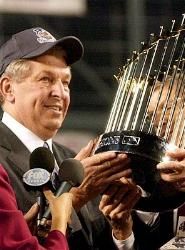 Jerry Colangelo Owner 1998-2004 |  Buck Showalter MGR 1998-2000 | 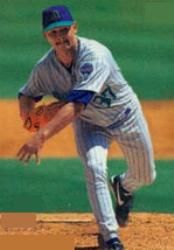 Omar Daal 1998-2000 | 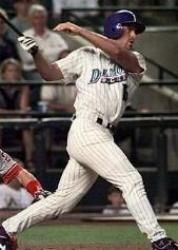 Travis Lee 1998-2000 | 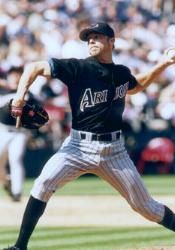 Brian Anderson 1998-2002 | 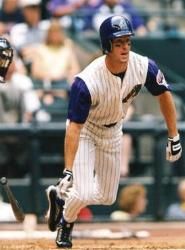 Jay Bell 1998-2002 |
 Damian Miller 1998-2002 |  Erubiel Durazo 1999-2002 | 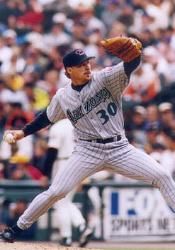 Todd Stottlemyre 1999-2002 | 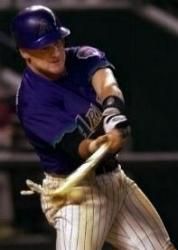 Matt Williams 1998-2003 |  Byung-Hun Kim 1999-2003, 2007 | 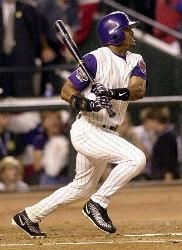 Tony Womack 1999-2003 |
 Miguel Batista 2000-2003, 2006 |  Curt Schilling 2000-2003 |  Mark Grace 2001-2003 |  Craig Counsell 2001 NLCS MVP | 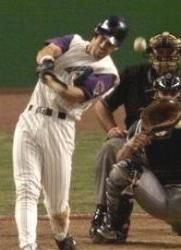 Luis Gonzalez 2001 World Series Game 7 Winning Hit | 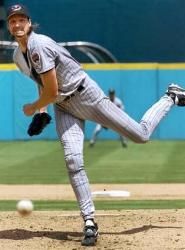 Randy Johnson 1999, 2000, 2001 & 2002 Cy Young |
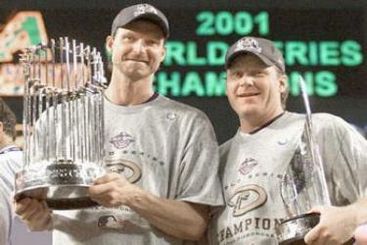 Randy Johnson & Curt Schilling 2001 Co-World Series MVPs | 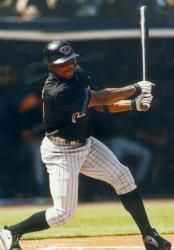 Junior Spivey 2001-2003 |  Steve Finley 1999-2004 | 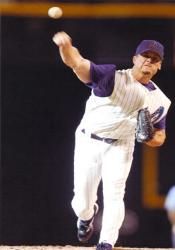 Matt Mantei 1999-2004 |  Danny Bautista 2000-2004 | |
 Bob Brenly MGR 2001-2004 | 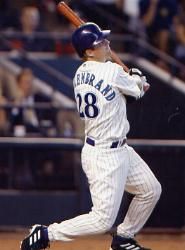 Shea Hillenbrand 2003-2004 | 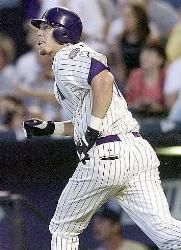 Richie Sexson 2004 |  Alex Cintron 2001-2005 | 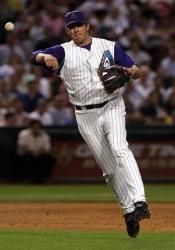 Troy Glaus 2005 | 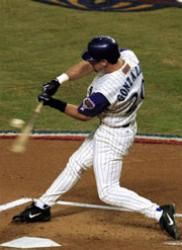 Luis Gonzalez 1999-2006 |
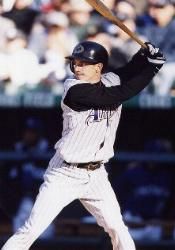 Craig Counsell 2000-2003, 2005-2006 | 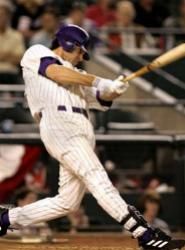 Shawn Green 2005-2006 | 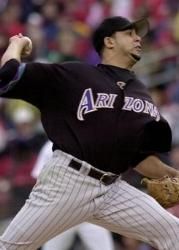 Claudio Vargas 2005-2006 | 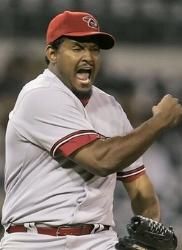 Jose Valverde 2003-2007 |  Livan Hernandez 2006-2007 | 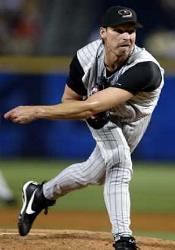 Randy Johnson 1999-2004, 2007-2008 |
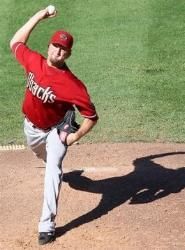 Brandon Lyon 2005-2008 |  Orlando Hudson 2006-2008 | 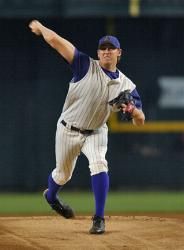 Brandon Webb 2003-2009 2006 Cy Young |  Chad Tracy 2004-2009 |  Tony Clark 2005-2007, 2008-2009 | 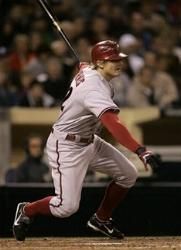 Eric Byrnes 2006-2009 |
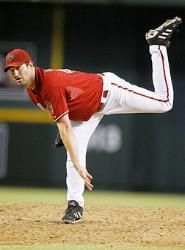 Doug Davis 2007-2009 | 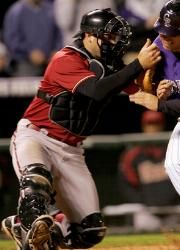 Chris Snyder 2004-2010 |  Connor Jackson 2005-2010 |  Mark Reynolds 2007-2010 | 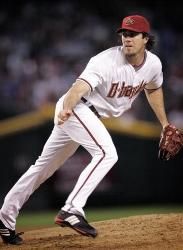 Dan Haren 2008-2010 | 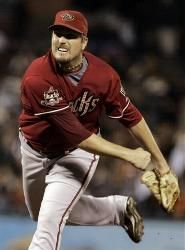 Chad Qualls 2008-2010 |
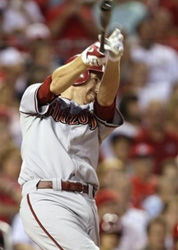 Adam LaRoche 2010 | 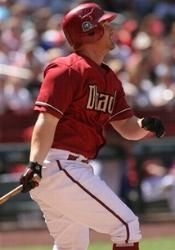 Stephen Drew 2006-2012 | 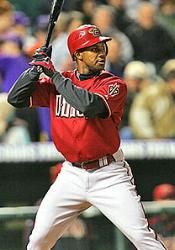 Chris Young 2006-2012 | 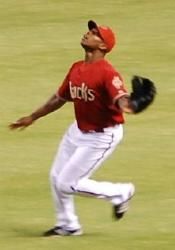 Justin Upton 2007-2012 | 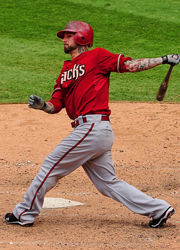 Ryan Roberts 2010-2012 | 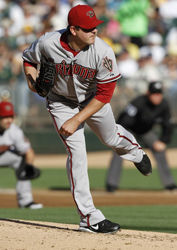 Joe Saunders 2010-2012 |
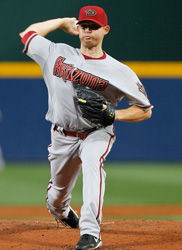 Ian Kennedy 2010-2013 |  Jason Kubel 2012-2013 |  Heath Bell 2013 | 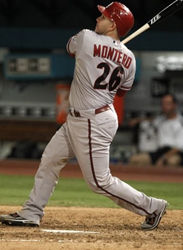 Miguel Montero 2006-2014 | 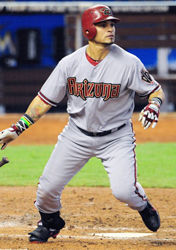 Gerardo Parra 2009-2014 | 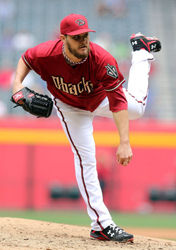 Wade Miley 2011-2014 |
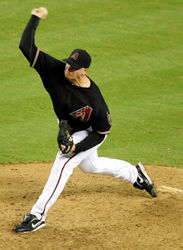 J.J. Putz 2011-2014 | 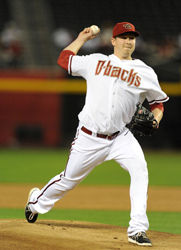 Trevor Cahill 2012-2014 |  Eric Chavez 2013-2014 | 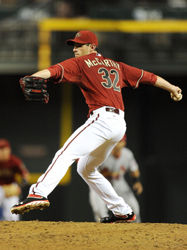 Brandon McCarthy 2013-2014 | 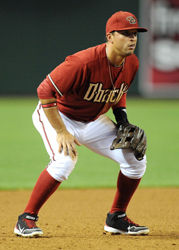 Martin Prado 2013-2014 | 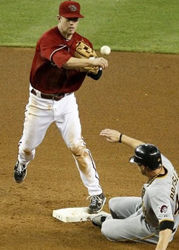 Aaron Hill 2011-2015 |
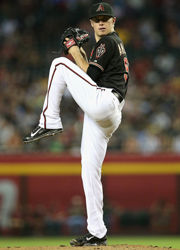 Chase Anderson 2014-2015 | 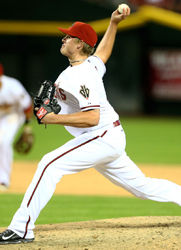 Addison Reed 2014-2015 | 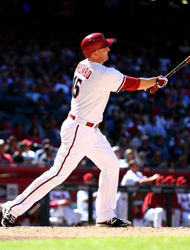 Mark Trumbo 2014-2015 |  Ender Inciarte 2015 | 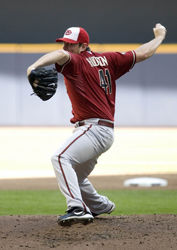 Daniel Hudson 2010-2016 |  Josh Collmenter 2011-2016 |
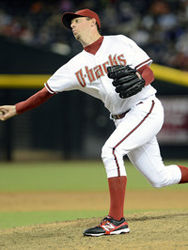 Brad Ziegler 2011-2016 | 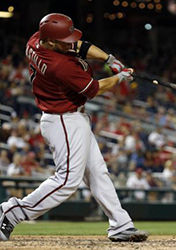 Wellington Castillo 2015-2016 | 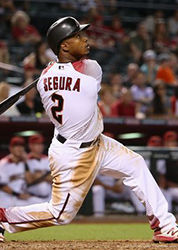 Jean Segura 2016 | 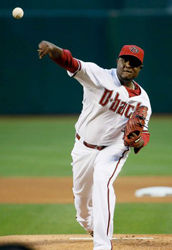 Rubby De La Rosa 2015-2017 |  Brandon Drury 2015-2017 | 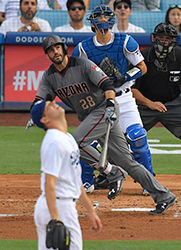 J.D. Martinez 2017 |
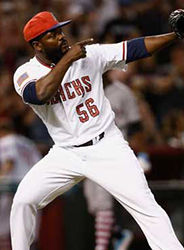 Fernando Rodney 2017 |  Paul Goldschmidt 2011-2018 | 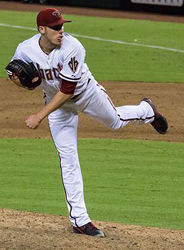 Patrick Corbin 2012-2018 | 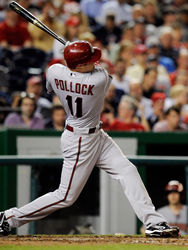 A.J. Pollock 2012-2018 | 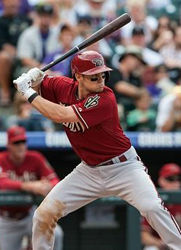 Chris Owings 2013-2018 | 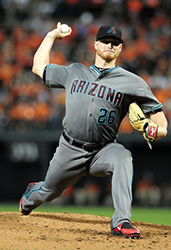 Shelby Miller 2016-2018 |
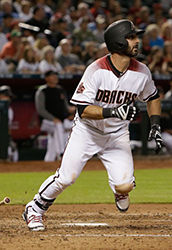 Daniel Descalso 2017-2018 | 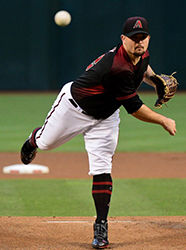 Zack Godley 2015-2019 | 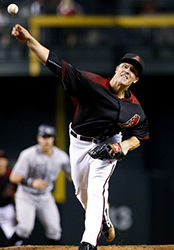 Zack Greinke 2016-2019 |  John Ryan Murphy 2017-2019 | 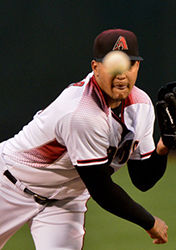 Taijuan Walker 2017-2019 | 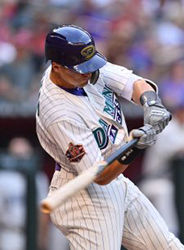 Nick Ahmed 2014-Present |
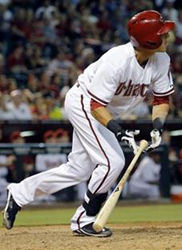 Jake Lamb 2014-Present | 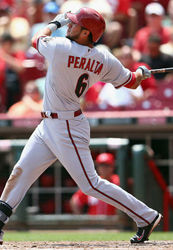 David Peralta 2014-Present | 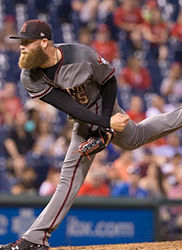 Archie Bradley 2015-Present |  Robbie Ray 2015-Present |  Yasmany Tomas 2015-2017, 2019-Pres |  Ketel Marte 2017-Present |
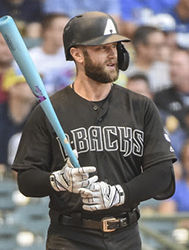 Christian Walker 2017-Present | 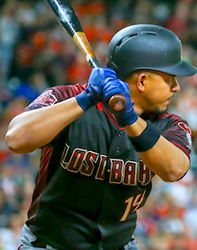 Eduardo Escobar 2018-Present | 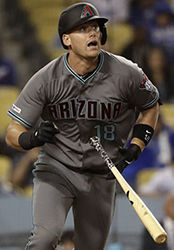 Carson Kelly 2019-Present | 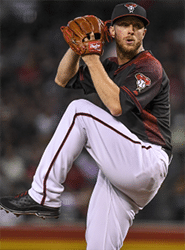 Merrill Kelly 2019-Present |  Madison Bumgarner 2020-Present | |
